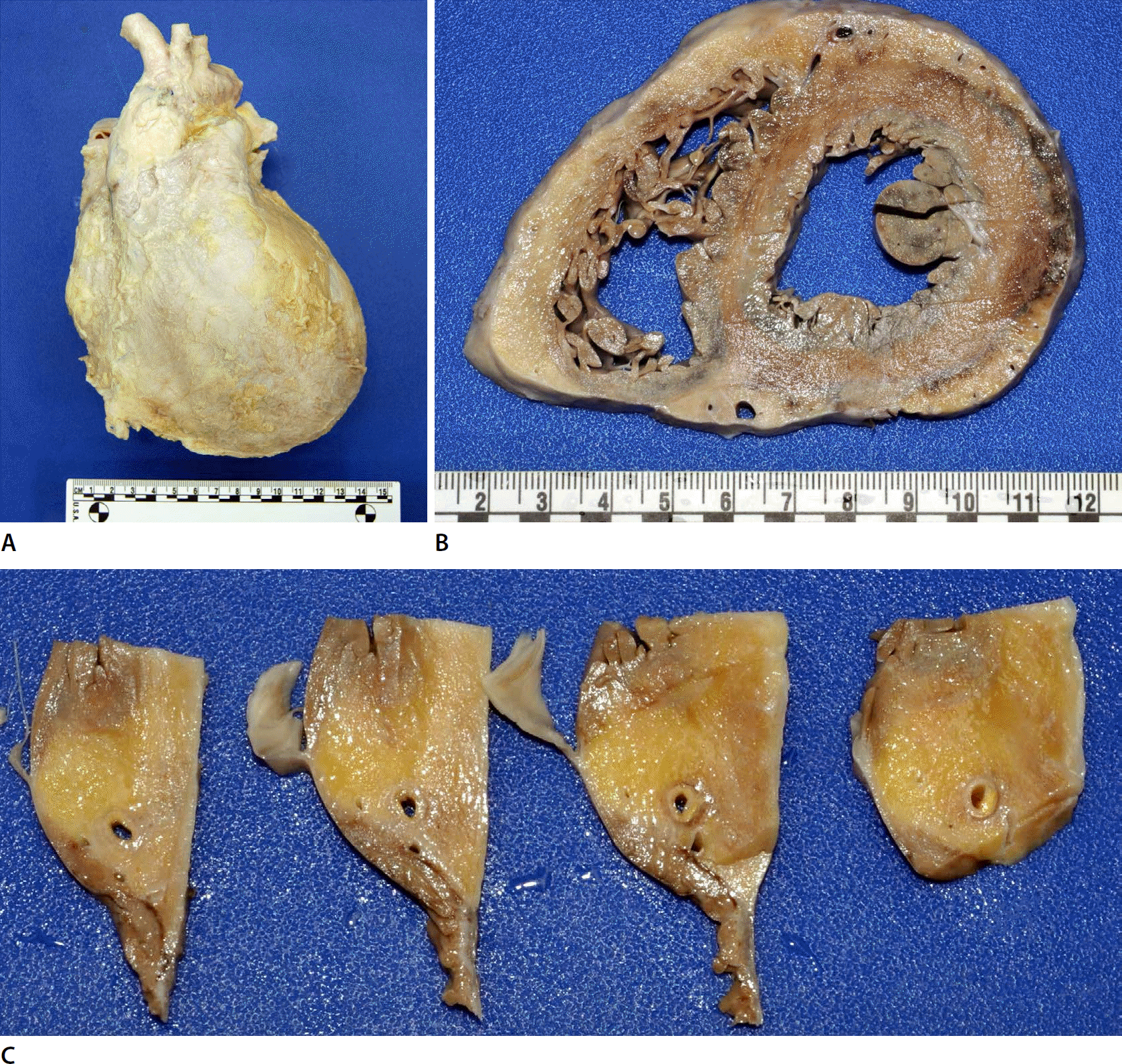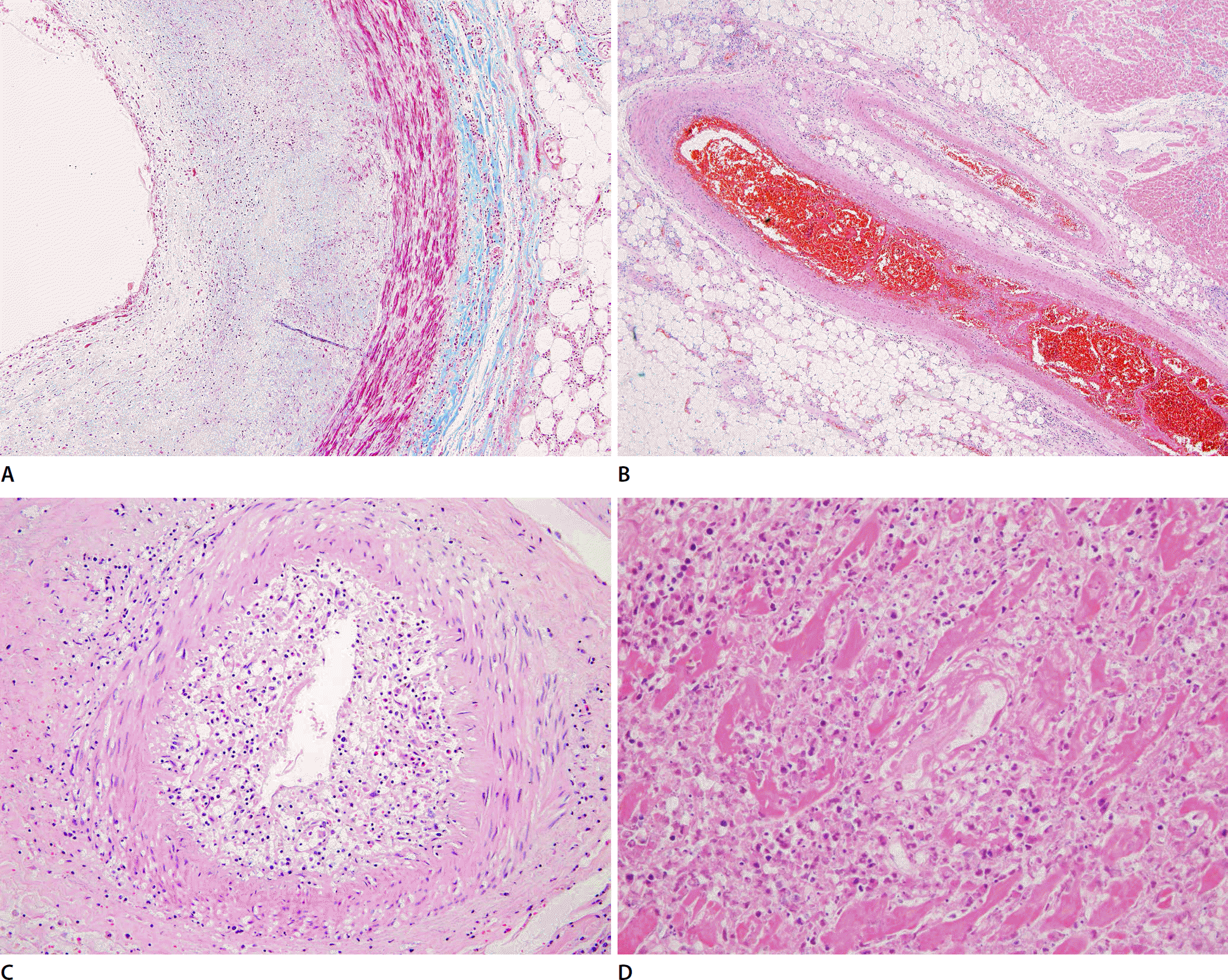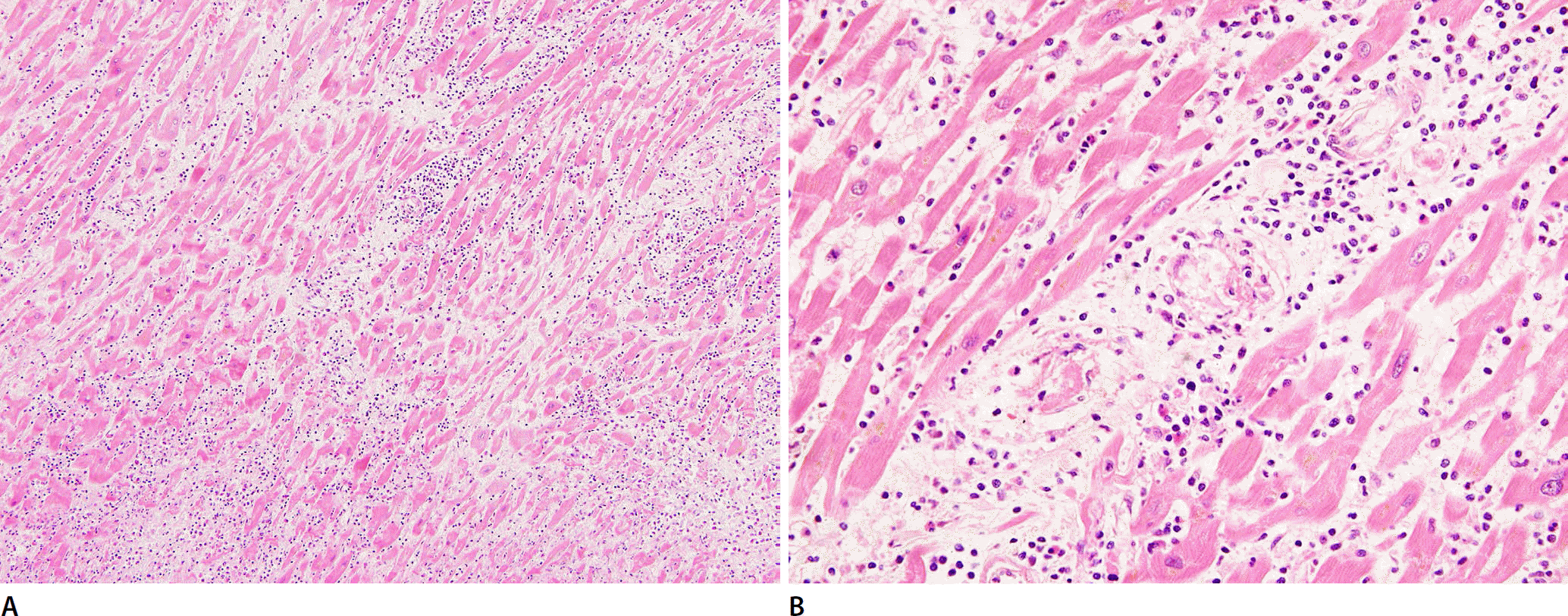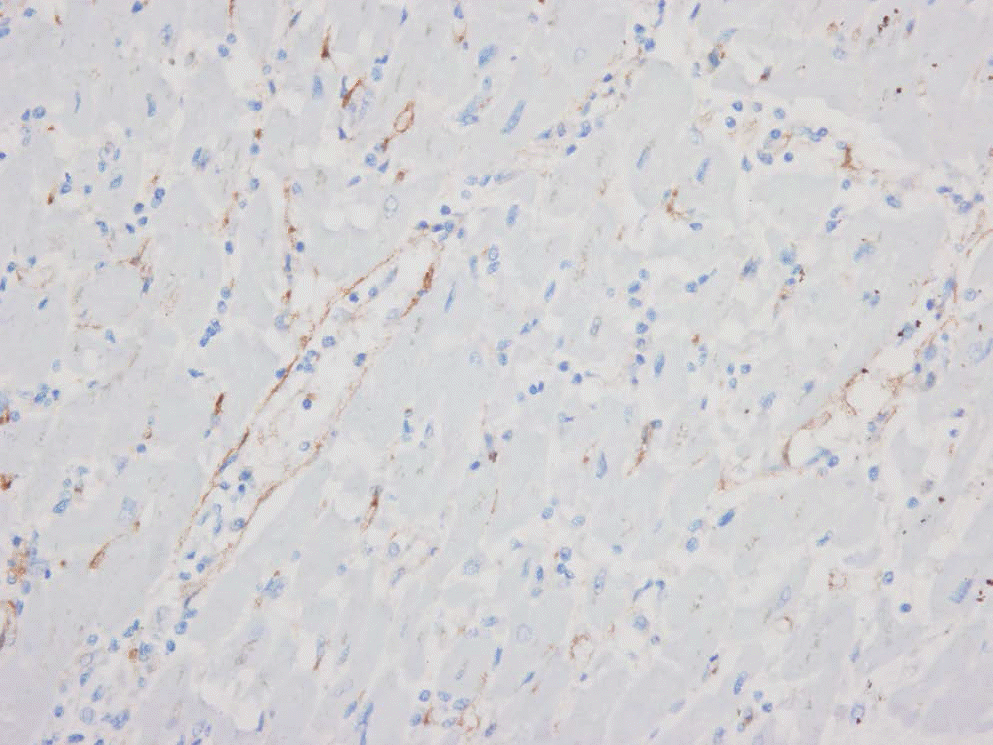Abstract
After the Organ Transplant Act was enforced in 2000, the criteria for the diagnosis of brain death have been legalized, and cardiac transplantation has become a promising treatment choice for patients with chronic heart disease. Even though more than hundreds of cases have been accumulated in the national registry and the survival rates are increasing, the compliance of longterm survivors may decrease paradoxically, which can hinder the efforts to enhance the quality of the registry. The patients who are lost from the doctor's surveillance and die outside hospitals should be appropriately examined to determine the cause of death so that the influence of their medical condition, if any, on their death could be revealed. Here, we report an autopsy case of a patient who died of a complication of chronic rejection after cardiac transplantation.
Go to : 
References
1. Korean Network for Organ Sharing. Annual report of the transplant 2016. Cheongju: Korean Center for Disease Control;2017.
2. Lee HY, Jeon ES, Kang SM, et al. Initial report of the Korean Organ Transplant Registry (KOTRY): heart transplantation. Korean Circ J. 2017; 47:868–76.

3. The International Society for Heart and Lung Transplantation. International Thoracic Organ Transplant (TTX) Registry data slides [Internet]. Addison: The International Society for Heart and Lung Transplantation;2017. [cited 2018 Jul 29]. Available from. https://ishltregistries.org/.
4. Lee SJ, Hong SG. Current status of heart transplantation and left ventricular assist device: major changes in the last decade. Hanyang Med Rev. 2014; 34:185–96.

6. Skoric B, Cikes M, Ljubas Macek J, et al. Cardiac allograft vasculopathy: diagnosis, therapy, and prognosis. Croat Med J. 2014; 55:562–76.
7. Mehra MR, Crespo-Leiro MG, Dipchand A, et al. International Society for Heart and Lung Transplantation working formulation of a standardized nomenclature for cardiac allograft vasculopathy-2010. J Heart Lung Transplant. 2010; 29:717–27.

8. Alexander RT, Steenbergen C. Cause of death and sudden cardiac death after heart transplantation: an autopsy study. Am J Clin Pathol. 2003; 119:740–8.
Go to : 
 | Fig. 1.Gross findings of formalin-fixed heart and coronary arteries of the deceased. (A) The heart is enlarged and the entire epicardium is adhered to the pericardial sac. (B) Cross section of the lateral wall of left ventricle shows focal discoloration which implies ischemic necrosis. (C) In the serial section of major coronary arteries, the lumens are narrowed due to diffuse concentric wall thickening (left circumflex artery). |
 | Fig. 2.Microscopic findings of cardiac allograft vasculopathy and related myocardial infarction. (A) The cross-section of the coronary artery shows intimal hyperplasia with inflammatory cell infiltration (Masson-Trichrome stain, ×100). Intraluminal thrombosis (B, H&E stain, ×40) and arteritis (C, H&E stain, ×200) observed in subcoronary branches. (D) The ischemic area shows extensive myocyte necrosis and karyorrhexis (H&E stain, ×400). |
 | Fig. 3.Microscopic findings of acute cellular rejection. Dense infiltration of mixed inflammatory cells is observed in myocardial interstitium, which is mainly composed of lymphocytes and monocytes, accompanied by myocyte injury and intramyocardial vasculitis (A, H&E stain, ×100; B, H&E stain, ×400). |




 PDF
PDF ePub
ePub Citation
Citation Print
Print



 XML Download
XML Download